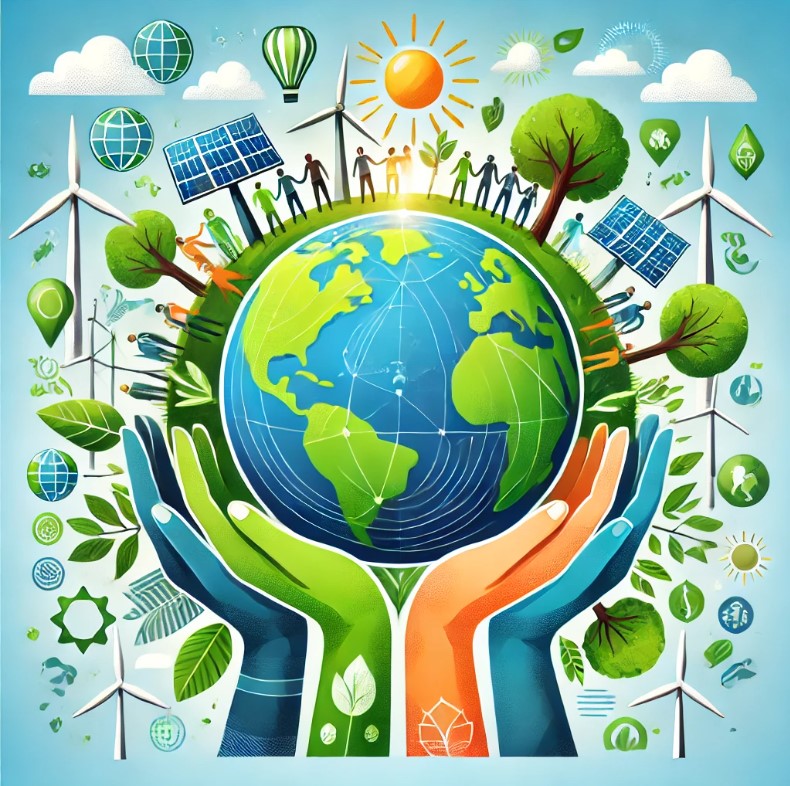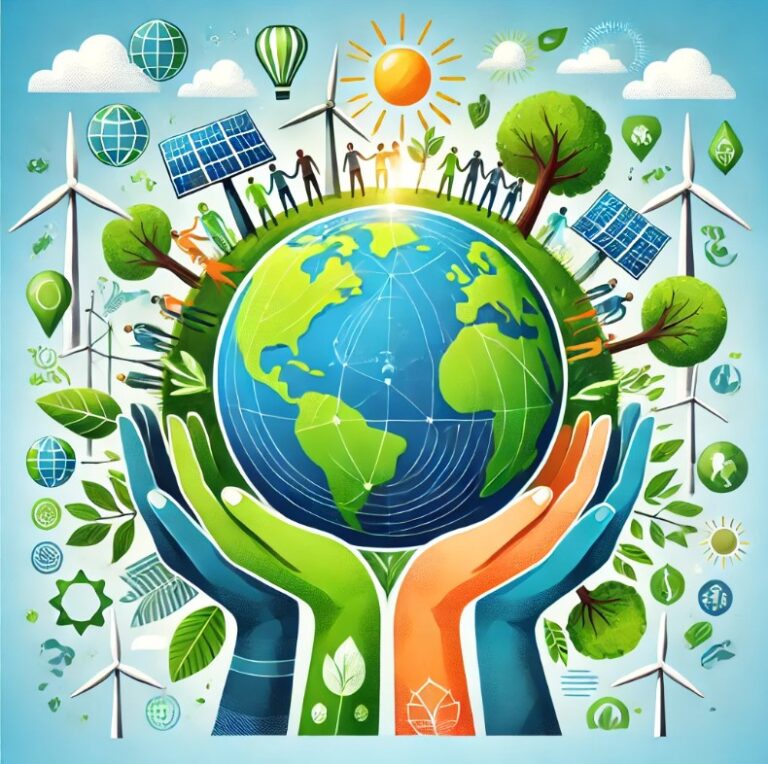The world is home to several countries with impressive wealth and economic prosperity. These nations have thriving economies, high living standards, and robust financial systems.
Understanding the factors that contribute to their wealth and the challenges they face is essential in comprehending global economic dynamics.
| Rank | Country | Adjusted GDP/capita |
|---|---|---|
| 1 | Luxembourg | 142,214 $ |
| 2 | Singapore | 127,565 $ |
| 3 | Ireland | 126,905 $ |
| 4 | Norway | 114,899 $ |
| 5 | Qatar | 114,648 $ |
| 6 | Bermuda | 95,837 $ |
| 7 | United Arab Emirates | 87,729 $ |
| 8 | Switzerland | 83,598 $ |
| 9 | United States of America | 76,399 $ |
| 10 | Denmark | 74,005 $ |
| 11 | Netherlands | 69,577 $ |
| 12 | Brunei | 69,275 $ |
| 13 | Iceland | 69,081 $ |
| 14 | Hong Kong * | 69,049 $ |
| 15 | Austria | 67,936 $ |
| 16 | Belgium | 65,027 $ |
| 17 | Sweden | 64,578 $ |
| 18 | Germany | 63,150 $ |
| 19 | Australia | 62,625 $ |
| 20 | Bahrain | 61,228 $ |
| 21 | Saudi Arabia | 59,065 $ |
| 22 | Finland | 59,027 $ |
| 23 | Canada | 58,400 $ |
| 24 | Kuwait | 58,056 $ |
| 25 | Malta | 55,928 $ |
| 26 | France | 55,493 $ |
| 27 | Macao | 55,344 $ |
| 28 | United Kingdom | 54,603 $ |
| 29 | New Zealand | 51,967 $ |
| 30 | Italy | 51,865 $ |
| 31 | South Korea | 50,070 $ |
| 32 | Slovenia | 50,032 $ |
| 33 | Czechia | 49,946 $ |
| 34 | Israel | 49,509 $ |
| 35 | Lithuania | 48,397 $ |
| 36 | Estonia | 46,697 $ |
| 37 | Spain | 45,825 $ |
| 38 | Japan | 45,573 $ |
| 39 | Poland | 43,269 $ |
| 40 | Hungary | 41,907 $ |
| 41 | Romania | 41,888 $ |
| 42 | Sint Maarten * | 41,812 $ |
| 43 | Oman | 41,724 $ |
| 44 | Portugal | 41,452 $ |
| 45 | Guyana | 40,642 $ |
| 46 | Puerto Rico | 40,498 $ |
| 47 | Croatia | 40,380 $ |
| 48 | Bahamas | 40,379 $ |
| 49 | Latvia | 39,956 $ |
| 50 | Panama | 39,280 $ |
Economic Indicators of Wealth
To determine the wealthiest countries, various economic indicators are considered. Two primary measures are Gross Domestic Product (GDP) and Per Capita Income. GDP represents the total value of goods and services produced within a country, while Per Capita Income calculates the average income per person.
List of the Richest Countries in the World:
Among the top contenders for the title of the richest countries are the United States, China, Japan, Germany, and the United Kingdom. These nations possess strong economic foundations and exert significant influence on the global stage.
Factors Contributing to the Wealth of these Countries
The wealth of these countries can be attributed to a combination of factors. First, their status as industrial powerhouses with diverse and dynamic economies plays a crucial role. their commitment to innovation and technology allows them to stay at the forefront of economic advancement.
These countries also benefit from an abundance of natural resources and a well-educated and skilled workforce.
Challenges Faced by the Richest Countries
Despite their wealth, these nations face their share of challenges. Income inequality is a significant concern, as wealth is often concentrated in the hands of a few, leading to social and economic disparities.
Environmental sustainability is another pressing issue, as these countries grapple with balancing economic growth with environmental stewardship. Political stability is crucial for ensuring continued economic prosperity and growth.
Understanding the richest countries in the world and the factors that contribute to their wealth offers insight into the global economic landscape. By addressing the challenges they face, these countries can strive for more inclusive and sustainable growth, benefitting not only their citizens but also the global community.
Economic Indicators of Wealth
Get ready to dive into the world of economic indicators of wealth! In this section, we’ll explore two key factors that contribute to a country’s financial prosperity: gross domestic product (GDP) and per capita income.
Discover how these crucial metrics shed light on the economic health and wealth distribution within the richest nations. Let’s unravel the fascinating connections between these indicators and the overall financial status of countries around the globe!
Gross Domestic Product
Gross Domestic Product (GDP) measures the total value of goods and services produced within a country during a specific period. It is a vital economic indicator for assessing a nation’s economic performance and growth.
Here are the top five countries with the highest GDP in 2021:
– United States: $22.675 trillion – China: $16.642 trillion – Japan: $5.311 trillion – Germany: $4.415 trillion – United Kingdom: $3.020 trillion
The United States has the highest GDP at $22.675 trillion, followed by China with $16.642 trillion. Japan, Germany, and the United Kingdom rank third, fourth, and fifth, respectively.
GDP reflects a country’s economic output and is influenced by factors like consumption, investment, government spending, and net exports. It is an important indicator of a nation’s economic strength and can affect its overall standard of living.
GDP includes sectors like agriculture, industry, and services, allowing for comparisons of different economies in terms of size and productivity.
Countries with high GDP often experience increased employment opportunities, improved infrastructure, and better living standards for their citizens. It’s essential to consider other factors like income inequality, environmental sustainability, and political stability to fully understand a nation’s economic health.
Per Capita Income: Where the rich get richer and the poor get left behind, but hey, at least the GDP per head is impressive.
Per Capita Income
Per capita income measures the average income earned per person in a country. It is calculated by dividing the total national income by the population. Per capita income provides insights into the standard of living and economic well-being.
Some of the richest countries’ per capita income is shown in the table below:
| Country | Per Capita Income (USD) |
| United States | $65,298 |
| China | $10,098 |
| Japan | $45,478 |
| Germany | $54,797 |
| United Kingdom | $45,648 |
The table highlights significant variations in per capita income among these countries. The United States has the highest per capita income at $65,298, indicating a higher average income level. Conversely, China has a per capita income of $10,098, reflecting a lower average income level.
Per capita income is influenced by factors such as economic growth, employment rates, and income distribution. It is important to note that per capita income provides an overall average and does not capture income distribution within the population. Income inequality can significantly impact individuals’ well-being, regardless of the average per capita income.
To increase per capita income, countries focus on strategies like promoting economic growth, improving education and skills, and reducing income inequality. By enhancing these factors, countries can strive for higher per capita incomes and improve overall prosperity.
There’s a wealth of information coming up, so get ready to meet the richest countries in the world!
A Detailed Look into the Richest Countries in the World
Curious to know which countries top the charts as the richest in the world? In this section, we’ll dive into the list of the wealthiest nations, including the United States, China, Japan, Germany, and the United Kingdom. Prepare to be amazed by the economic prowess and financial might of these powerhouses.
Get ready to discover fascinating facts and figures that showcase their economic achievements. Hold on tight as we unveil the rankings and delve into the reasons behind their impressive wealth.
United States
The United States is a wealthy country with a strong economy and high per capita income. Here is a table summarizing key economic indicators for the
| Indicator | Value |
| Gross Domestic Product (GDP) | $22.675 trillion |
| Per Capita Income | $65,298 |
| Adjusted GDP per Capita | $63,316 |
| Purchasing Power Parity (PPP) | $62,868 |
The United States has one of the largest economies globally, reflected by its high GDP of $22.675 trillion. This indicates the total value of goods and services produced in the country in a year. The per capita income of $65,298 signifies the average individual’s earnings in the United States.
Adjusted GDP per capita, which considers income inequality, is $63,316. This measure provides a more accurate representation of the average person’s standard of living. The purchasing power parity (PPP) of $62,868 reflects the purchasing ability of a particular income.
The United States’ wealth can be attributed to various factors. It is an industrial powerhouse with a highly developed manufacturing sector and advanced technology.
This contributes to economic growth and job creation. Innovation and technology play a crucial role in enhancing the country’s productivity and competitiveness in the global market.
Natural resources also play a significant role in the United States’ wealth. The country has abundant reserves of minerals, oil, and natural gas, contributing to its economic prosperity.
The United States has a strong focus on developing human capital through investments in education and research, ensuring a skilled and productive workforce.
Despite its wealth, the United States faces challenges such as income inequality, environmental sustainability, and political stability. Income inequality is a persistent issue, with a significant wealth gap between the richest and poorest individuals.
Environmental sustainability is a concern as the country aims to balance economic growth with ecological preservation. Ensuring political stability is vital for the country’s continued economic success.
China: Where the Great Wall isn’t the only thing that’s massive, with a wealth that’s towering over the competition.
China
China is rich and known for its economic growth and development. Key factors contributing to China’s wealth are:
- Economic Powerhouse: China has a strong Gross Domestic Product (GDP), making it the world’s second-largest economy.
- Innovation and Technology: China’s investment in innovation and technology has boosted productivity and competitiveness.
- Abundance of Natural Resources: China is blessed with abundant natural resources, such as coal, iron ore, and rare earth minerals, which fuel its economic growth.
- Human Capital: China has a large and skilled workforce, thanks to its emphasis on education and training.
Despite progress, China faces challenges such as income inequality, environmental sustainability, and political stability. Efforts are being made to address these challenges and ensure sustainable growth.
Japan
Japan is a wealthy and technologically advanced country with a strong economy. It ranks among the top countries in the world in terms of wealth. To understand Japan’s economic strength, let’s look at some key indicators:
– Gross Domestic Product (GDP): $5.15 trillion (2021) – Per Capita Income: $40,020 (adjusted GDP per capita) – Purchasing Power Parity (PPP): $42,860 (GDP per capita)
Japan’s GDP of $5.15 trillion and per capita income of $40,020 demonstrate its economic strength. The country’s purchasing power parity is also impressive at $42,860.
Japan’s wealth can be attributed to its industrial prowess, particularly in manufacturing sectors like automobiles, electronics, and machinery. These innovative and technologically advanced industries contribute significantly to economic growth.
In addition, Japan effectively manages and utilizes its limited natural resources, such as timber and seafood, to support its economy.
Japan’s wealth is cultivated by its highly educated and skilled workforce, which plays a crucial role in driving innovation and productivity.
Japan also faces challenges, including income inequality and the need for environmental sustainability. The country works towards balancing economic growth with environmental conservation, and political stability is important for maintaining its economic prosperity.
Germany: Where efficiency and sausages are treated with equal importance.
Germany
Germany is one of the richest countries in the world, evident in various aspects.
- Economic Indicators: Germany has a robust economy, with a high Gross Domestic Product (GDP) and strong per capita income. The country’s adjusted GDP per capita is among the highest globally, reflecting its economic prosperity.
- Industrial Powerhouse: Germany is renowned for its industrial prowess. It is home to numerous multinational corporations and is a global leader in automotive manufacturing, engineering, and technology. The country’s manufacturing sector, known for its efficiency and innovation, has played a significant role in its economic success.
- Technological Advancements: Germany’s commitment to innovation has fostered its economic growth. The country invests heavily in research and development, particularly in fields like renewable energy and automation. Its technological advancements have enhanced industries’ global competitiveness.
- Human Resources: Germany prioritizes cultivating a skilled workforce, which strengthens its economy. The country emphasizes high-quality education and vocational training programs, ensuring a steady supply of skilled labor. This focus on human capital has contributed to Germany’s overall prosperity.
- Political Stability: The country’s political stability provides a solid foundation for economic growth. The German government is committed to maintaining a stable and predictable business environment, attracting investments and fostering economic development.
- Environmental Sustainability: Germany leads in environmental sustainability, implementing policies to support renewable energy, reduce carbon emissions, and promote sustainable practices. These efforts contribute to the country’s long-term economic stability and resilience.
United Kingdom
The United Kingdom is one of the richest countries in the world, with a strong economy and high standard of living. Here are some factors that contribute to its wealth:
- Economic Indicators: The UK has a strong Gross Domestic Product (GDP), ranking sixth globally in 2021. It also has a relatively high per capita income and purchasing power parity (PPP).
- Industrial Powerhouses: The UK boasts major industries such as finance, manufacturing, pharmaceuticals, and technology. London’s financial sector is particularly important.
- Innovation and Technology: The UK is known for innovation and has renowned universities and research institutions. It has a thriving tech industry and successful startups.
- Natural Resources: Although not resource-rich, the UK has significant oil and natural gas reserves in the North Sea, contributing to its wealth.
- Human Capital: The UK prioritizes education and has a highly skilled workforce. Investment in research and development cultivates proficiency and drives growth.
Despite its wealth, the UK faces challenges, including income inequality, environmental sustainability, and political stability. Addressing these challenges is crucial for continued prosperity.
Pro-tip: When considering visiting or investing in the UK, research specific regions as economic conditions and opportunities may vary. Stay informed about economic policies and trends to make informed decisions regarding investments or business ventures.
Factors Contributing to the Wealth of these Countries
From the industrial powerhouses that drive their economies to the rich natural resources they possess, this section unravels the factors behind the wealth of the world’s richest countries. We’ll delve into the role of innovation and technology, and how it shapes their success.
We’ll explore the value of human capital and the impact it has on their economic prosperity. Join us as we uncover the secrets of these affluent nations and the ingredients that contribute to their astonishing wealth.
Industrial Powerhouses
- The United States is a major industrial powerhouse known for its strong manufacturing sector. It contributes significantly to the country’s wealth and economic growth. The United States is home to large corporations in the automotive, technology, aerospace, and pharmaceutical industries that create jobs and generate substantial revenue.
- China has become a global manufacturing giant due to its vast population and low labor costs. Many multinational companies have set up manufacturing operations in China. The country’s industrial sector includes electronics, textiles, steel, automobiles, and machinery. China’s industrial prowess has made it one of the richest countries in the world.
- Germany is renowned for its advanced and high-quality manufacturing sector. It is a global leader in automotive manufacturing with brands like BMW, Volkswagen, and Mercedes-Benz. Germany excels in engineering, machinery, chemicals, and pharmaceuticals. Its emphasis on innovation, precision, and quality has made it a prominent industrial powerhouse.
- Japan is known for its technological advancements and excellence in manufacturing. The country’s industrial sector is dominated by industries such as automotive, electronics, machinery, and robotics. Japanese companies like Toyota, Sony, and Panasonic are recognized worldwide for their innovation and quality. Japan’s industrial strength has contributed to its economic success.
- South Korea has rapidly developed into an industrial powerhouse in sectors including electronics, automotive, shipbuilding, and petrochemicals. Companies like Samsung, Hyundai, and LG have played a significant role in the country’s economic growth. South Korea’s focus on technological advancements and innovation has propelled it onto the global stage.
Industrial powerhouses are crucial in driving economic growth, creating employment opportunities, and contributing to overall prosperity. These countries have heavily invested in research and development, infrastructure, and technological advancements to maintain their status as industrial leaders.
The success of their manufacturing sectors has led to increased exports, foreign investments, and a strong economic foundation.
Innovation and Technology
Innovation and technology are vital for the wealth and development of the wealthiest countries. These countries have achieved remarkable progress in multiple fields, contributing to economic growth and prosperity.
Here are key aspects to consider when examining the significance of innovation and technology:
- Research and Development (R&D): The wealthiest countries allocate resources to research and development, with the aim of fostering innovation and technological breakthroughs. They invest in scientific research, technology development, and infrastructure.
- Technological Advancements: The richest nations are at the forefront of technological advancements and rapidly adopt new technologies. They embrace emerging technologies such as artificial intelligence, robotics, biotechnology, and renewable energy.
- Entrepreneurship and Startups: These countries foster a robust entrepreneurship culture and provide support to startups. They offer funding, mentorship, and favorable regulatory environments to encourage innovation and the growth of cutting-edge companies.
- Educational Excellence: The education systems in these countries place a strong emphasis on STEM subjects. They cultivate a skilled workforce, promoting innovation and technological expertise.
- Infrastructure and Connectivity: The wealthiest countries make significant investments in modern infrastructure, including high-speed internet connectivity, transportation networks, and digital infrastructure. This enables efficient adoption and utilization of technological advancements.
- Partnerships and Collaboration: Cooperation between government, academia, and industry is encouraged in these nations. Public-private partnerships facilitate knowledge exchange, shared resources, and joint research initiatives, driving innovation forward.
- Digital Transformation: The richest countries have embraced the digital revolution, advancing their economies through e-commerce, digital services, and smart cities. They prioritize digital infrastructure, cybersecurity, and data protection to foster a thriving digital ecosystem.
- Sustainable Innovation: These nations recognize the importance of sustainable development and eco-friendly technologies. They promote research and investment in clean energy, green infrastructure, and environmental solutions to address global challenges.
- Global Leadership: With their technological advancements, the wealthiest countries often become global leaders in various industries. They establish industry standards, attract international investments, and exert significant influence on the global technology landscape.
Innovation and technology drive economic growth and progress. They increase productivity, create job opportunities, and enhance the overall well-being of societies.
The wealthiest countries understand the value of innovation and continuously strive to maintain their leadership in technological advancements.
Natural Resources
Countries’ wealth and economic prosperity often stem from their natural resources. These resources are crucial for driving economic growth, attracting investments, and shaping a nation’s development. Below is a table highlighting some of the richest countries in the world and their significant natural resources:
| Country | Natural Resources |
| United States | Oil, natural gas, coal, copper, gold, uranium |
| Russia | Oil, natural gas, coal, iron ore, timber |
| Saudi Arabia | Oil, natural gas, gold, copper |
| Australia | Coal, iron ore, gold, natural gas, uranium |
| Canada | Oil, natural gas, uranium, timber |
These countries effectively utilize their natural resources to strengthen their economies. For example, the United States is a major oil producer due to its vast oil reserves.
Russia uses its abundant natural gas reserves to become a key player in the energy market. Saudi Arabia, also an OPEC member, benefits from its significant oil reserves, allowing it to dominate the global oil industry.
The exploitation of natural resources generates substantial revenue for countries. It enables them to invest in infrastructure development, education, healthcare, and other essential sectors.
Natural resources contribute to job creation, attract foreign direct investment, and foster economic stability.
It is crucial for countries to sustainably manage their natural resources. This involves adopting responsible extraction practices, minimizing environmental impact, and diversifying their economies. Overreliance on a single resource can lead to volatile economies vulnerable to price fluctuations and other external factors.
Human Capital
Human Capital plays a crucial role in countries’ wealth, representing the skills, knowledge, and abilities of the workforce. Here are key aspects to consider when discussing:
- Educational Attainment: The level of education attained by the population is a significant indicator of human capital. Countries with a highly educated population tend to have a better-equipped workforce with advanced skills. For example, Finland and South Korea, where most of the population is highly educated, have strong human capital for economic growth.
- Healthcare and Well-being: The health and well-being of a population are vital for productivity and economic development. Countries that invest in quality healthcare systems and prioritize the health of their citizens have higher levels of human capital. Norway and Sweden, for instance, have prioritized healthcare and consistently rank high in terms of human capital.
- Technological Advancements: A country’s ability to adapt to and embrace technology is crucial for human capital development. Countries that invest in research and development, promote innovation, and have a skilled workforce with effective technology utilization have a competitive advantage. The United States, Japan, and Germany are known for their technological advancements and highly skilled workforce.
- Skills Development: Continuous learning and skill development are essential for enhancing human capital. Countries that invest in vocational training programs, upskilling, and reskilling opportunities, and have effective training systems have a stronger human capital base. Singapore, for example, prioritizes skills development through initiatives like SkillsFuture, encouraging lifelong learning and skills upgrading.
By recognizing the importance of human capital and investing in education, healthcare, technology, and skills development, countries can cultivate a highly skilled and productive workforce that drives economic growth and prosperity.
The struggles of the wealthiest nations include income inequality, environmental sustainability, and political stability – even money can’t buy everything.
Challenges Faced by the Richest Countries
The world’s wealthiest nations face a myriad of challenges that demand attention. From income inequality to environmental sustainability and political stability, each sub-section of this section delves deep into the hurdles that these countries must confront.
As we explore these issues, we uncover a complex landscape that highlights the need for innovative solutions and collaborative efforts to ensure long-term prosperity. Buckle up as we embark on a journey through the challenges faced by the richest countries, where no issue is too daunting to tackle.
Income Inequality
Income inequality refers to the unequal distribution of income within a society, and it is a significant issue that affects many of the richest countries. When discussing income inequality, it is important to consider several key aspects.
Firstly, wealth concentration plays a crucial role in contributing to income inequality. In rich countries, a small percentage of the population holds a significant portion of the nation’s wealth, resulting in disproportionate incomes for those at the top.
Wage gaps between different sectors and professions exacerbate income inequality. High-income industries like finance and technology offer higher wages compared to low-income industries such as retail and hospitality.
Moreover, education and skills are important factors in determining income levels. In general, higher education and specialized skills lead to higher incomes. Limited access to education or training can result in lower incomes, further contributing to income inequality.
Furthermore, social safety nets and government policies are vital in addressing income inequality. Comprehensive welfare systems, progressive taxation, and minimum wage policies help reduce income disparities and provide support to individuals with low incomes.
Limited access to quality education, healthcare, and employment creates barriers to social mobility and economic opportunities, perpetuating income inequality and hindering upward economic mobility.
Therefore, it is crucial for policymakers in rich countries to address income inequality through inclusive economic policies, investments in education and skills development, and the implementation of social welfare programs. By doing so, they can promote economic growth, social stability, and improve overall well-being for their citizens.
Throughout history, income inequality has been a recurring challenge influenced by various factors such as technological advancements, social and political systems, and economic policies. In evolving societies, it is crucial to strive for greater equality and ensure that economic prosperity is accessible to all, regardless of their background or circumstances.
Environmental Sustainability
Environmental sustainability plays a pivotal role in the wealthiest nations worldwide, such as the United States, China, Japan, Germany, and the United Kingdom. These countries possess the necessary resources and capabilities to significantly impact the environment.
Various factors contribute to environmental sustainability in these nations, which include:
- Renewable energy: In order to diminish carbon emissions and foster a sustainable future, these countries are capable of investing in solar, wind, and hydroelectric power.
- Environmental regulations: The most prosperous nations have implemented strict environmental regulations to safeguard natural resources and encourage sustainable practices.
- Conservation efforts: By investing in conservation projects, national parks, and protected areas, these countries are actively safeguarding endangered species and ecosystems.
- Waste management: Effective waste management systems, encompassing recycling programs and initiatives to minimize single-use plastics, are imperative for environmental sustainability.
- Education and awareness: Environmental sustainability commences with education and awareness. These countries prioritize environmental education within schools and promote awareness campaigns pertaining to sustainable practices.
By prioritizing these factors, the wealthiest nations can lead the charge in environmental sustainability, setting a commendable example for the rest of the world.
Fact: The United Kingdom has committed to achieving net-zero greenhouse gas emissions by 2050, showcasing its determination to combat climate change and ensure environmental sustainability.
Political Stability
Political stability is an essential factor for the prosperity and wealth of a country. It not only attracts investments but also promotes economic growth and maintains social cohesion.
Countries that have a high level of political stability are characterized by strong institutions, effective governance, and a predictable policy environment. Consider the following key points:
- Investor confidence: Political stability instills confidence in investors by reducing the risk of sudden policy changes or unrest that could negatively impact investments and economic growth.
- Economic development: Political stability enables the implementation of long-term development plans and encourages sustainable foreign investments. It fosters entrepreneurship, job creation, and innovation, ultimately contributing to overall economic prosperity.
- Social cohesion: Political stability ensures inclusivity, protects human rights, and cultivates peaceful coexistence among diverse communities. It diminishes conflicts, civil strife, and social divisions, thereby enhancing the overall quality of life.
- International relations: Political stability enhances a country’s international standing, enabling diplomatic discussions, favorable trade agreements, and strong alliances. Stable countries are reliable partners and hold greater influence on global issues.
- Sustainable development: Political stability plays a vital role in achieving sustainable development goals. Stable governments can effectively implement policies for environmental protection, social welfare, and infrastructure development, benefiting future generations.
To sustain political stability, it is crucial to continuously maintain strong institutions, uphold the rule of law, and promote inclusive governance. Prioritizing political stability creates an environment that is conducive to economic growth, social harmony, and sustainable development.
According to the World Bank, countries with higher political stability experience an average annual economic growth rate of 2.5%.
FAQs
What factors contribute to a country’s wealth?
Many factors contribute to a country’s wealth, including its gross domestic product (GDP) per capita, net worth, national net wealth, purchasing power parity (PPP), financial sectors, tax regimes, and lucrative natural resources.
What is the richest country in Europe?
The richest country in Europe, in terms of GDP per capita, is Monaco with a GDP per capita of $173,688 per year per person.
Here are some additional details about Monaco:
- Full name: Principality of Monaco
- Full native name: Principauté de Monaco
- Internet code: .mc
- Total area: 0.77 square miles
- Population: 36,377 people (2024 estimate)
- Languages: French (100%), Ligurian (16%), Provencal (14%)
- Capital city: Monaco
- Currency: €1.00 (euros), currency code EUR
- GDP: $6.816 billion per year (2020 estimate)
What is the richest state in the US by GDP per capita?
The richest state in the US by GDP per capita is the District of Columbia, with a GDP per capita of $200,277 in 2020. Please note that the District of Columbia is not a state, but a federal district.
If we consider only states, then Massachusetts has the highest GDP per capita among states, with a GDP per capita of $75,297 in 2020.
How does inflation impact poorer countries?
Inflation can have a negative impact on poorer countries, as it can increase the cost of living and decrease the purchasing power of their population. This can exacerbate income inequality and make it more challenging for lower-income families to afford basic necessities.
Which country will be richest in 2050?
According to a report by PricewaterhouseCoopers (PWC), the world’s richest countries by 2050 are projected to be:
- China: With an estimated Gross Domestic Product (GDP) of $24.62 trillion and a per capita income of $17,759.
- United States: With an estimated GDP of $22.27 trillion and a per capita income of $55,134.
- India: With an estimated GDP of $8.17 trillion and a per capita income of $5,060.
These projections are based on various factors including population growth, technological advancement, and economic policies. However, these are just predictions and actual outcomes may vary due to unforeseen circumstances or changes in global economic conditions.
Do low tax rates in certain countries contribute to their wealth?
Yes, low tax rates in certain countries can attract foreign investment, stimulate economic growth, and contribute to their overall wealth. Some countries are considered tax havens, which can artificially inflate their GDP and attract large bank deposits.
How do developing countries fare in terms of wealth?
Developing countries often have deficient infrastructures and immature economies, which can put them at a disadvantage in the global market. They may struggle to attract professional talent, have limited financial sectors, and face challenges in improving their average standard of living.
What are some challenges faced by high-income countries?
High-income countries, despite their wealth, face challenges such as income inequality, disparities in access to resources and opportunities, and socioeconomic and political unrest. They may also have to manage the impact of global economic downturns and adapt to changing financial climates.
How does the cost of living affect a country’s wealth?
The cost of living is an important factor in determining a country’s wealth. High living costs can reduce the purchasing power of individuals and impact their overall financial health. Countries with higher costs of living often need to provide higher average salaries to maintain a reasonable standard of living for their residents.



































